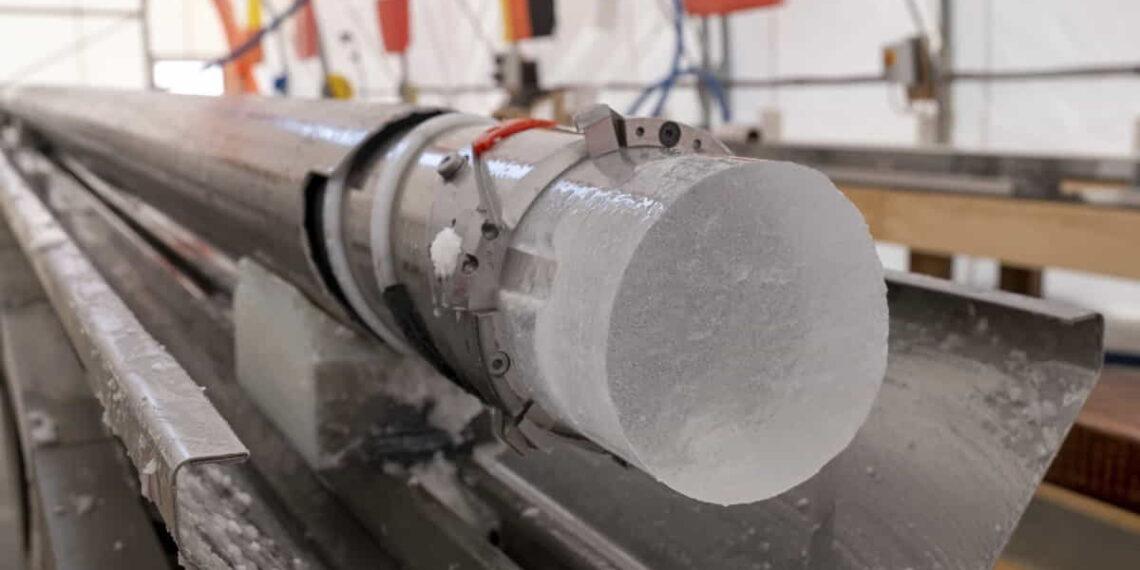Scientists Drill Nearly 2 Miles Deep to Extract 1.2 Million-Year-Old Ice Core from Antarctica
An international team of scientists has made a groundbreaking discovery by drilling nearly 2 miles (2.8 kilometers) into Antarctica’s ice sheet to retrieve one of the oldest ice cores ever found. The core is believed to be at least 1.2 million years old, offering a rare glimpse into Earth’s ancient climate and atmosphere.
A Significant Milestone in Ice Core Research
The successful drilling operation was completed in early January at Little Dome C, near the Concordia Research Station in Antarctica. The team, consisting of 16 scientists and support personnel, spent four years working during the summer months to reach their goal. With temperatures averaging about minus-35°C (minus-25.6°F), the conditions were challenging.
“It was a remarkable moment for us when we finally reached the bedrock,” said Federico Scoto, an Italian researcher who was part of the team. The ice core’s age was confirmed through isotope analysis, marking it as one of the oldest ever drilled.
Unlocking the Secrets of Earth’s Climate History
The ice core will provide invaluable data to help scientists understand how Earth’s atmosphere and climate have evolved over millions of years. By analyzing the ancient ice, researchers hope to uncover insights into past Ice Age cycles and how atmospheric carbon affected global climate shifts.
“This ice core will give us a clear picture of how greenhouse gases, chemicals, and dust have changed over time,” said Carlo Barbante, an Italian glaciologist and the coordinator of the Beyond EPICA project. Barbante is also the director of the Polar Science Institute at Italy’s National Research Council.
The team had previously drilled an ice core from about 800,000 years ago, but the new core, taken from a depth of 2.8 kilometers, extends our understanding much further into Earth’s climatic history.
Greenhouse Gas Levels and Climate Change Insights
The analysis of previous ice cores has already provided significant insights. For example, scientists have found that concentrations of greenhouse gases such as carbon dioxide and methane during the warmest periods of the last 800,000 years never exceeded the levels seen since the Industrial Revolution began.
“Today, we are witnessing carbon dioxide levels that are 50% higher than the highest levels recorded over the past 800,000 years,” said Barbante, underscoring the urgent need to understand how these changes are impacting global climate.
A Collaborative European Effort
The Beyond EPICA project, funded by the European Union and supported by several European countries, aims to extend our knowledge of Earth’s climate history. Italy is coordinating the project, which is a major international collaboration.
Expert Reactions to the Discovery
Richard Alley, a renowned climate scientist at Penn State, expressed his excitement about the discovery. Although he was not involved in the project, Alley emphasized the significance of ice core research for understanding both the past climate and the role of humans in current climate change.
“This is truly an amazing achievement,” Alley said. “The discoveries made from these ice cores will offer incredible insights into Earth’s history and help us better understand our impact on the environment today.”
What’s Next for Ice Core Research?
The drilling of such an ancient ice core is not just a milestone for climate science; it also opens up new opportunities to learn more about Earth’s history beyond the ice record itself. Scientists are eager to continue their research and analyze the data extracted from this remarkable core, with the hope that it will provide crucial answers about our planet’s past and future climate.
The findings from this project have the potential to reshape our understanding of climate change and guide future efforts to address environmental challenges worldwide.
This article was rewritten by JournosNews.com based on verified reporting from trusted sources. The content has been independently reviewed, fact-checked, and edited for accuracy, neutrality, tone, and global readability in accordance with Google News and AdSense standards.
All opinions, quotes, or statements from contributors, experts, or sourced organizations do not necessarily reflect the views of JournosNews.com. JournosNews.com maintains full editorial independence from any external funders, sponsors, or organizations.
Stay informed with JournosNews.com — your trusted source for verified global reporting and in-depth analysis. Follow us on Google News, BlueSky, and X for real-time updates.














